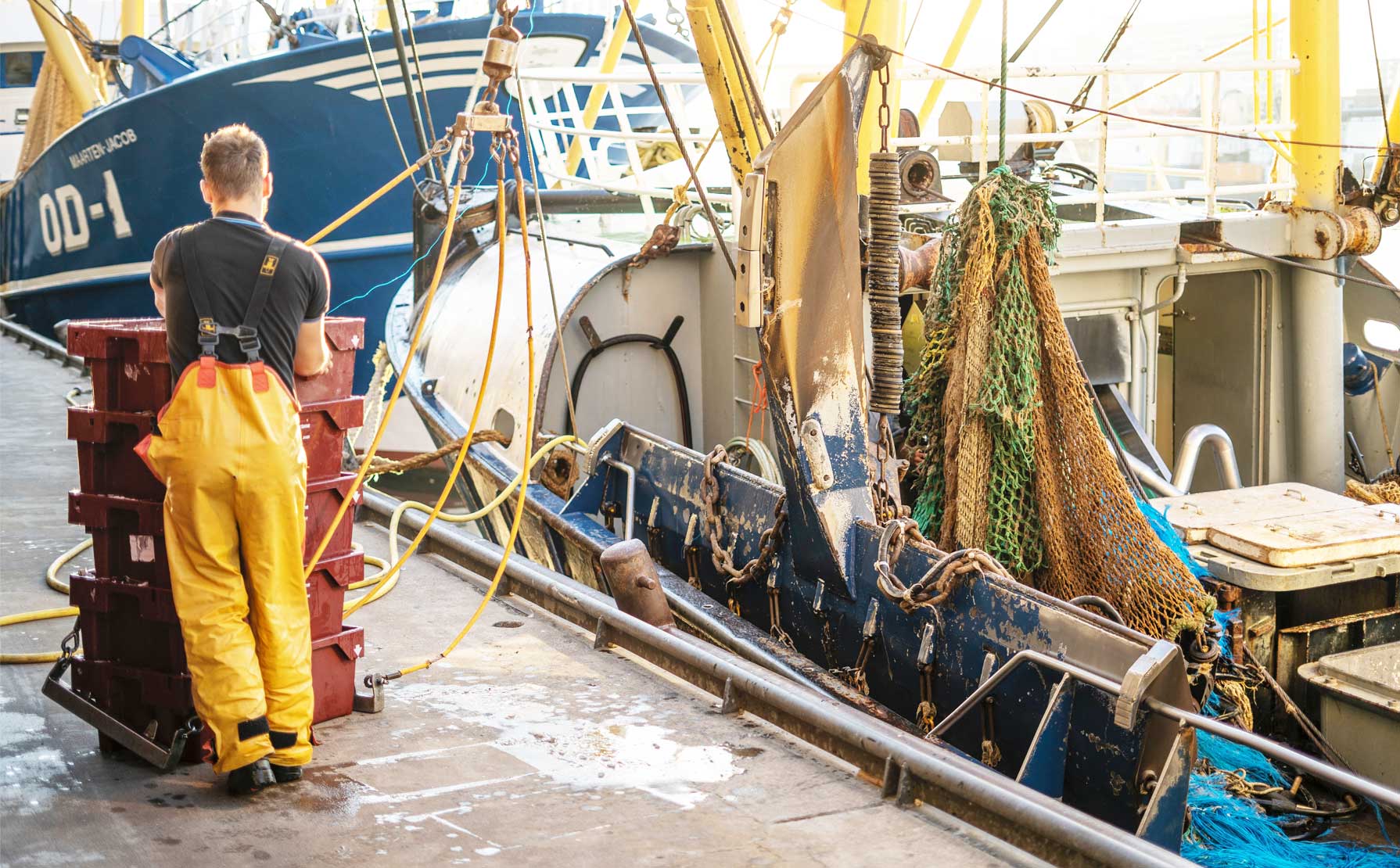Fishing Regulations
Case study

#Fishing #Sustainability
Global fishing moves hundreds of billions of dollars annually, supporting hundreds of millions of people.
🡒 Fishing is a heavily regulated industry in many territorial waters, and is subject to international agreements, particularly on the high sea. This is to ensure sustainability of fisheries and the protection or recovery of endangered species. Enforcement of any such regulation is clearly difficult given the extent of the ocean and the number of vessels, with illegal fishing possibly accounting for $23 billion (FAO, 2018). Monitoring of fishing is multi-faceted including physical observers, enforcement officers & vessels, movement tracking, satellites, cameras, complex modelling and more. Here we deal with the activities of registered fishing vessels in the South Pacific.
What we’ve done
Knowing where, when, and what people are catching is important for many reasons. The catch compositions are needed for stock assessment and management, and extracting resources from a nation's territorial waters has financial implications - a fee may be levied. Due to this, legal fishing fleets are required to be tracked remotely (GPS/VMS) and record their activities. Concerns about the veracity of recorded activities leads to extensive analysis of the real-time location data of vessels. In short, what activities are vessels likely to be engaged in, based on behaviour?
We have built predictive models of vessel behaviour classes based on very large ground-truthed datasets for vessels operating within the South Pacific (17 Pacific nations under the umbrella of the FFA). Vessel movements and various auxillary data provide real-time probabilistic predictions of 1000s of vessels 24 hours a day.
Technical aspects
A variety of machine-learning and statistical classifiers are fitted and compared, either naturally multi-class, or an aggregate of binary classifiers. In addition to the basic spatio-temporal data from VMS, many movement variables are derived and combined with auxiliary data. Observer data provide ground-truthed behaviors for both the fitting and validation of model predictions.
#Fishing #Sustainability
Global fishing moves hundreds of billions of dollars annually, supporting hundreds of millions of people.
🡒 Fishing is a heavily regulated industry in many territorial waters, and is subject to international agreements, particularly on the high sea. This is to ensure sustainability of fisheries and the protection or recovery of endangered species. Enforcement of any such regulation is clearly difficult given the extent of the ocean and the number of vessels, with illegal fishing possibly accounting for $23 billion (FAO, 2018). Monitoring of fishing is multi-faceted including physical observers, enforcement officers & vessels, movement tracking, satellites, cameras, complex modelling and more. Here we deal with the activities of registered fishing vessels in the South Pacific.
What we’ve done
Knowing where, when, and what people are catching is important for many reasons. The catch compositions are needed for stock assessment and management, and extracting resources from a nation's territorial waters has financial implications - a fee may be levied. Due to this, legal fishing fleets are required to be tracked remotely (GPS/VMS) and record their activities. Concerns about the veracity of recorded activities leads to extensive analysis of the real-time location data of vessels. In short, what activities are vessels likely to be engaged in, based on behaviour?
We have built predictive models of vessel behaviour classes based on very large ground-truthed datasets for vessels operating within the South Pacific (17 Pacific nations under the umbrella of the FFA). Vessel movements and various auxillary data provide real-time probabilistic predictions of 1000s of vessels 24 hours a day.
Technical aspects
A variety of machine-learning and statistical classifiers are fitted and compared, either naturally multi-class, or an aggregate of binary classifiers. In addition to the basic spatio-temporal data from VMS, many movement variables are derived and combined with auxiliary data. Observer data provide ground-truthed behaviors for both the fitting and validation of model predictions.